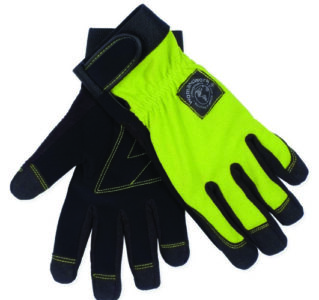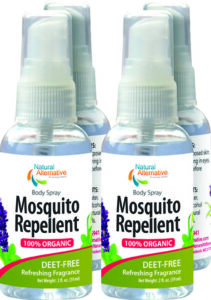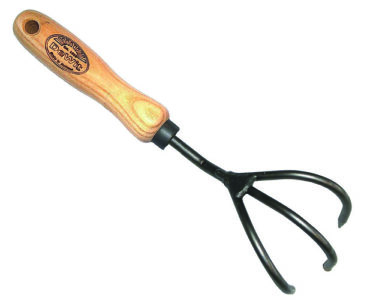Whether you’re clearing weeds from your vegetable plot, pruning perennials, or potting herbs for your kitchen window, precautions will ensure a successful experience. Any gardener with a season under their belt can attest to the importance of planning and proper protection for the variety of outdoor unknowns. I’ve learned the hard way from many hidden gardening hazards, and I’m not the only one. Avoid gardening safety hazards such as sun, poison ivy, bugs, and more with these garden safety tips.
Protective Clothing Can Mitigate Gardening Safety Hazards
A well-kept lawn or garden means spending time in the sun. Agricultural workers and farmers have higher rates of skin cancer. According to the Skin Cancer Foundation, “One in five Americans will develop skin cancer by the age of 70. [And] having five or more sunburns doubles your risk for melanoma.” Melanoma is when pigment-producing cells grow out of control and, unless caught early, can spread to other parts of the body.

Wearing and reapplying sunscreen with a high SPF count is imperative, but ideally, leaving less skin exposed to direct sun is the way to go. Long, lightweight sleeves, pants, and a wide-brim hat are essential. Your ears and nose often get missed when lathering on the SPF, and these are prime trouble areas for sunburns. I use a washable cotton bucket hat that’s fully lined and adjusts to fit any head size. It comes in beautiful heirloom garden prints and is incredibly comfortable. The 3-1/2-inch brim keeps my face and neck shaded perfectly, and the construction is sturdy yet cool in the summer heat. This product, produced by Womanswork, is “designed for the way women work.”
The Womanswork Digger Garden Gloves keep my hands protected with an unmatched fit. The company celebrates 35-plus years as a woman-owned business and produces a variety of products designed to fit women�…–�…not just downsized versions of a mens fit. I’m selective about the type of gardening gloves I use, and I never work without them. A good set of gloves protects me from cuts by hidden sharp debris in the soil (such as broken glass), and they’re vital for pruning roses. Often, sunscreen rubs off when planting and working in moist soil conditions, so we forget about sun protection. Plus, gloves save me time scrubbing my nails and cuticles at the end of the day. The Digger gloves are doubly reinforced at the fingertips and have a padded palm that prevents calluses when working with tools. The snug fit and Velcro cuff prevent soil from getting inside, and they hold up after repeated washes. My favorite thing about these gloves is the thoughtful brow wipe on the thumb for those extra-sweaty chores.

A good set of gloves protects you from plant irritants as well. Obviously, avoid poison ivy, sumac, and oak. Other plants that can cause skin irritation include monkshood (Aconitum napellus), chile and sweet pepper (Capsicum annuum), hyacinth, chrysanthemum, iris, lobelia, narcissus, stinging nettle, weeping fig (Ficus benjamina), parsnip, philodendron, ragweed, giant hogweed, and oleander. Reactions range from mild to severe, and treatments vary per contact. If you suspect a plant-related rash, it’s important to catch it early and research treatment for the specific irritant or seek medical attention. Extended contact with damp soil can over-dry your skin or release mold spores and pollen; keep your hands covered and wash them often. Sturdy gloves protect against harsh fertilizers as well. Just be cautious not to accidentally transfer irritants to your face and eyes while gardening, and flush your eyes immediately if you suspect a foreign particle. If exposed to a potentially harmful pollen or sap, shower immediately and wash everything you wore while working.
Garden Safety Tips for Repelling Insects
Stings, ticks, and insect bites will also put a damper on a beautiful gardening day. Many bug sprays contain a neurotoxin called permethrin that’s harmful to aquatic life, pets, and bees. This toxin can cause life-threatening breathing issues if inhaled and also kills brain cells. Insect bites can transmit illnesses, such as Lyme disease, West Nile virus, and the Zika virus, among a host of other unpleasant conditions. Research your repellent choice to choose the best option for your family and the environment. MOTHER EARTH NEWS has excellent articles to help you avoid pests, including how to get rid of chiggers, natural insect repellants, and homemade flea and tick spray, powder, and shampoo. If interested in making your own concoctions, grab the book Naturally Bug-Free by Stephanie L. Tourles and experiment with 75 nontoxic recipes for repelling mosquitos, ticks, fleas, ants, moths, and other insects. If you prefer a ready-made spray, ditch the itch and protect yourself naturally for hours with 100% Organic Mosquito Repellent. This lemon-scented spray’s ingredients include a blend of four essential oils to keep mosquitos from spoiling your outdoor activities.

I routinely burn citronella candles, oil, and incense to make my porch more enjoyable. Additionally, a variety of plants keep the pests away. Some of my favorites are lavender, marigold, citronella grass, catmint, rosemary, basil, citronella-scented geranium, bee balm, mint, sage, and allium. Keep an eye out for places where water collects and stagnates. Forgotten stacks of containers and water features without circulation can become prime breeding grounds for mosquitos.
Quality Tools Prevent Gardening Safety Hazards
Muscle strains, and a sore back and knees, are common results of overexertion in the garden. It’s always surprising how much pots weigh once filled and watered! I use a furniture dolly to move large containers or landscape elements that I can’t get into my wheelbarrow. Additionally, work smarter�…–�…not harder�…–�…with solid hand tools that take a lot of pressure without breaking in heavy clay and rocks. The 3-Tine Cultivator by DeWitt is hand-forged to finish and is excellent for tidying fall beds or prepping for spring planting. The Store has a line of these unyielding, sustainably made hand tools, including cultivators, weeders, and trowels that are aggressive, sharp, and strong. You won’t regret adding these tools to your gardening arsenal.

Lastly, high temperatures can lead to heat stress. Educate yourself on the early signs and symptoms of heat stroke and heat exhaustion, and stay safe with proper hydration. Avoid outdoor work from 10 a.m. to 2 p.m., when the sun is strongest, and opt for early morning or evening chores. Take regular breaks and drink plenty of water.
Preparation and planning will lead to a successful season, and the Mother Earth News Store has you covered for a safe and enjoyable growing experience.
Christine Stoner is an editor for Gas Engine Magazine and works on various other titles within Ogden Publications. She has a passion for fitness, healthy living, and sustainability.
Originally published as “Smarter Gardening” in the August/September 2023 issue of MOTHER EARTH NEWS magazine and regularly vetted for accuracy.







